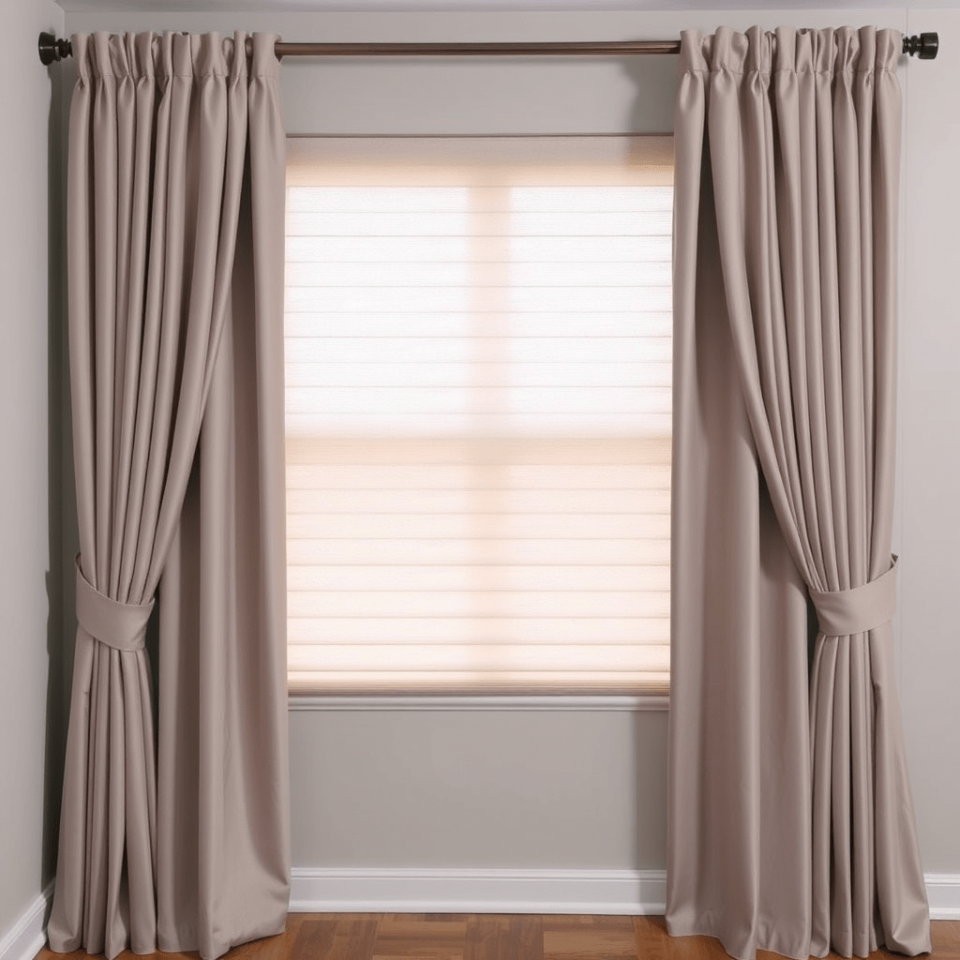Curtains and blinds are the most important entity of interior designs that bring out the beauty of the space and are also justified using functionality. Details should be cleared among both curtains and blinds to make the right choices while designing up the abode.
The essay below discusses the various features, past histories, present trends, and future avocations of curtains and blinds.
1. Fabric Selection
- Choosing upholstery that matches with the overall room theme
- Functionality: One needs to make a choice about what kind of curtain or blind, based on the function on hand.
2. Customization
- Provisions for customized curtains or blinds in the size required, the shape of the window, or any other specifications
- A design that makes it yours with the pattern, the color, or even the texture.
3. Maintenance
- Wash or dry clean the fabric of the curtains and follow recommendations from manufacturers to maintain the quality of the fabric.
- Clean and maintain the drapery or blinds periodically for a longer life.
Historical Evolution
Lambrusco, a typical character of a curtain that has been around for thousands of years, from ancient civilizations that used fabric to create areas of privacy and for controlling the entrance of light.
Blinds, on the other hand, are relatively new, with the first use of a slatted blind dating back to the 18th century. Both curtains and blinds had undergone changes for many centuries via applied materials, fashions, and mechanisms.
1. Window Treatments
- Explore the use of ornamentation like valances, drapes, or sheers.
- Window films or tints; offer privacy and light control without necessarily using other conventional covering.
2. Smart home
- Acquire smart home technologies featuring motorized drapes or blinds that can be operated from wherever you are.
- Install sensors for automatic opening and closing as per surrounding sunlight or temperature levels.
3. Eco-friendly Options
- Use eco-friendly curtain materials like bamboo or organic cotton or blind materials.
- Choose energy friendly window treatments for minimizing heat loss and saving utility bills.
As It Stands
This is the aspect of interior design that presently offers a terribly huge palette of possibilities concerning taste and requirements. Curtains can be made with all sorts of various fabrics, run the gamut in lightweight to heavy, and insulating.
The various materials they can be made from, would include wood, aluminum, and vinyl; numerous options provide a tremendous amount of light control and privacy.
1. Furniture
- Go with the selection of the window treatment
- Must complement the furniture
- Must consider the look and function of the furniture as a single unit.
2. Color Scheme
- Window curtains or blinds must be made matching with the available color theme of the room
- The can use the combinations of the different and contrasting can be used for more style interest and harmony.
3. Maintenance
- Do the curtains or blinds cleaning as often as it can be done for the longevity of the material.
- If there is a certain cleaning process set by the manufacturer on the use of any cleaningagent, follow what is indicated. Size, Shape, and Fabric Type Curtains can be made of cotton, silk, linen, polyester—the fabric type depends only on the purpose and type of look of a person.
Design Versatility From flowing drapes to tailored panels, the drapes give an all-round design versatility that will befit any interior, be it traditional or modern.
Light Control: The opacity levels of curtain fabrics can vary from sheer to blackout, offering not only choices but also control of light in any given room.
Temperature Control: Blinds or shades will control the temperature of a room by allowing the sunlight to come into the room, therefore, warming or cooling the room.
Private Space Creation: Another way of accommodating a room is by selecting appropriate window coverage so that outsiders are not able to peep in; meanwhile, it allows some amount of natural light to enter a room.
Aesthetic Role: Curtain fabrics play a very vital aesthetic role for an interior design since it helps in texture, color and style in a room. The appropriate fabric can help to improve the overall looks in the room.
Shades of materials: shades are made of varying materials that include wood, faux wood aluminum, vinyl, and every material has its unique properties regarding durability, how easy it is to clean, and the style it would deliver.
Mechanism Variations: Blinds can open with cords or wands, and some can be motorized for simplicity and the natural feel of operation.
Privacy and Light adjustment: With the facility to change the angle of blinds, there is accurate positioning to control and give convenience in maintaining adaptive lighting in spaces where it is required.
Energy Efficiency : Blinds can prove their insulation properties against heat or cold, ensuring that they play a key role in minimizing the usage of heat or air conditioning.
Ornamental Purposes: Besides protection, blinds can also be used for ornamental purposes and to upgrade a room’s look and add style to it.
Low Maintenance: Instead of all the maintenance rituals involved with other window solutions, blinds require just a straightforward dusting down from time to time to maintain a fresh look at it.
Child and Pet Safety: If your home has children or pets, using cordless blinds or blinds with inaccessible cords will help you minimize the hazard to your children or pets.
Implications
Looking into the future, technology will play a key role in making curtains and blinds evolve. Smart curtains and motorized blinds, which are dorm-friendly with the help of apps or voice commands, will just increase both convenience and energy efficiency. Alternatively, environmental awareness within designs could also go to the point of sustainable materials in window treatments and ecological designs are going to shape the future of the window treatment.
- Personalized curtains and drapes per needs and taste
- Technological advancements used in for light settings and privacy settings.
Health and Wellbeing
- UV protection and air purification
- Circadian based designs to save and used better sleep pattern
Aesthetics
- Minimal and sleek designs to focus on modernity
- Dramatic in colors, patterns, and textures to create interest on the spaces.
Conclusion
Basically, the difference between curtaining and blind finishes is not only on the type of material used and design but the functions they perform and contributions to aesthetics in space. Discover the differences and thus enable one to choose in line with what he or she particularly likes and wants. As technology makes for ever-expanding potential in interior design, the route map of curtains and blinds will come to embody innovation along with sustainability, in line with the fact that window treatments will only be dynamic and efficient.
Much can be thought about in the future of interior design, but one important element that is going through advancements to the final stage is window treatments.
With the smart technology pumped into it, curtains and blinds are most likely going to be something beyond passive in a room. Imagine automatic curtains that will be regulating the intensity of sunlight in a room or blinds that you can raise with voice commands to catch the optimum light.
This goes a long way in increasing convenience, and in its own way, it does well to push toward energy efficiency by optimizing natural light use.
Sustainability will be the more important direction of the tendencies in design, which in turn would influence materials and technologies of curtain and blinds design. That is, eco-friendly fabrics and recycled materials with energy-saving characteristics will most probably become basic offers in the market. So, this tendency will contribute to making better, more eco-conscious choices in the decoration of the home.
In short, evolving beyond mere functionality, the curtain and blinds tale touches on a fusion of technology, sustainability, design aesthetics. Yes, window treatment will, henceforth, take its form being eye-catching, functional, ecological, and technological.


